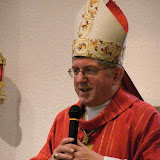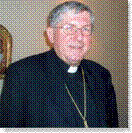Message from Fr. Jose Koluthara, CMI
| Lord Jesus,
we are afraid of being rejected; strengthen us to become a vineyard that produces good fruit. |
My Dear Brothers and Sisters,
What do you think of celebrating this Sunday’s liturgy having two banners depicting a vineyard on either side of the church? Today’s readings present us with a fine example of the power of a good symbol. In the 1st reading from Isaiah (Is 5:1-7), the prophet uses the image of the vineyard to speak about the state of God’s people, who had not been producing good fruit for the Lord. Jesus picks up the same image to speak about his own experience of being rejected by the leaders of the Jewish people. And as we read that in today’s Gospel passage (Mt 21:33-43), we rightly hear it as a warning to our own time that God expects us to produce good fruit, too.
The image of the vineyard is clearly a symbol in these passages. Like all symbols, it has more than one simple meaning. Notice that the parables in the two readings, though similar, differ in significant ways. In the 1st reading, the vineyard is destroyed because it produced wild grapes. In the Gospel the tenants (chief priests and elders) are destroyed and the vineyard is given to other tenants (Gentiles). In the first reading, the challenge is to all of Judah. In the Gospel the challenge is to the Jewish leaders who oppose Jesus and his mission.
It is this multivalence, this ability to carry many levels of meaning, that distinguishes a true symbol from a mere sign. Symbols are rich carriers of meaning, allowing people to enter into them and draw from them a variety of insights and meanings.
Since good liturgy relies on symbols, we have to make ourselves aware of tapping the power of symbols. For an effective participation in liturgy, sometimes a theme is chosen and the whole liturgy is based on that. Though this is a good practice in itself, the use of symbols in liturgy may serve the purpose better. The problem with a theme, at least one narrowly conceived, is that it attempts to make the liturgy say one thing to everybody. Good use of symbols, by contrast, invites us to engage the symbols in a context of mystery. This means that different people may draw very different meanings from the symbol, as the Holy Spirit touches the minds and hearts of each member of the worshiping community.
The liturgy does have its own dynamics and demands, but it also must remain open enough for the wide variety of people who celebrate it to enter into with their own backgrounds and abilities. That’s what good symbols allow.









